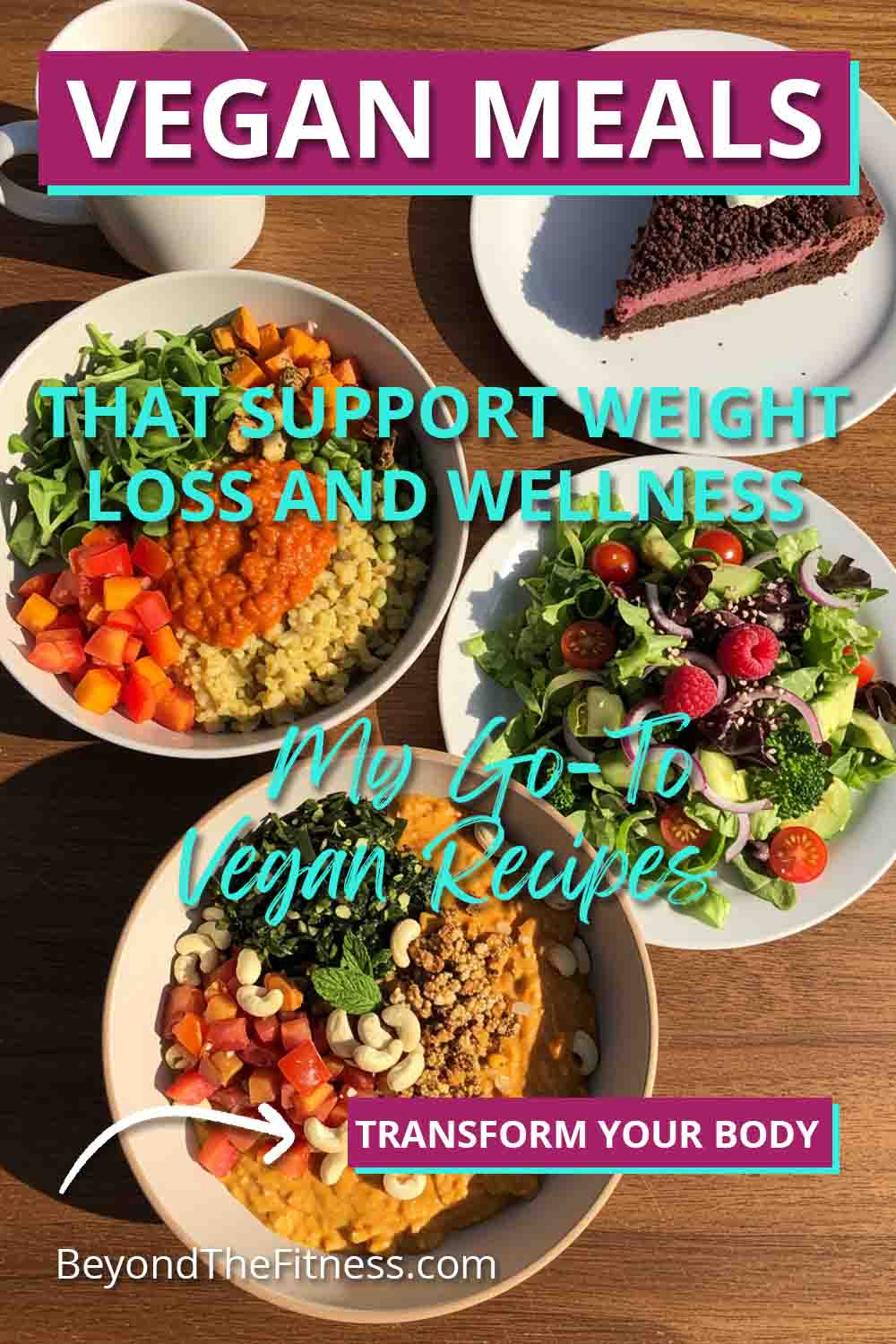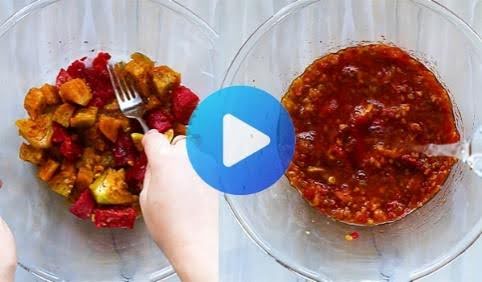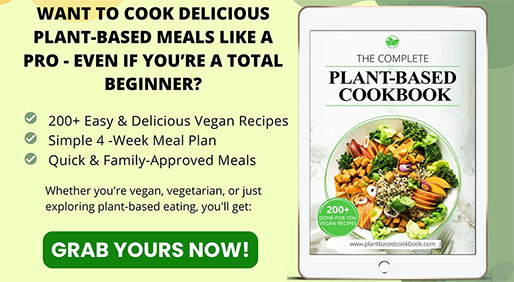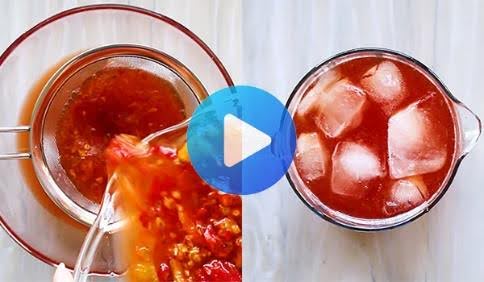Have you ever wondered if changing the way you eat could really help you reach your health and fitness goals? I know I have. Lots of people are talking about veganism lately. It seems like everywhere you look, someone is trying a plant-based diet. But what does that really mean, and could it be the right choice for you, especially if you’re looking to manage your weight or improve your fitness? As someone who works closely with women on their health journeys, I’ve explored this topic a lot. Let’s dive into what veganism is all about and see if it might fit into your life.
What Exactly Is a Vegan Diet?
So, what does it mean to “go vegan”? It’s pretty simple at its core. A vegan diet means you don’t eat any products that come from animals. This includes the obvious things like meat (beef, pork, chicken, turkey) and fish. But it also means avoiding other things that come from animals, like eggs, dairy products (milk, cheese, yogurt, butter), and even honey, because it’s made by bees.
Instead, people following a vegan diet focus on eating foods that come from plants. Think fruits, vegetables, beans, lentils, nuts, seeds, and grains like rice, oats, and quinoa. It sounds like a big change, and it can be. But it opens up a whole world of different foods to explore.
It’s different from being a vegetarian. Most vegetarians avoid meat and fish, but many still eat eggs or dairy products. Vegans take it a step further by cutting out all animal-derived foods. The focus is entirely on plants. This shift can have some interesting effects on the body, which is why so many people are curious about it for health reasons.
Insider Tip: Enjoying Healthy and Flavorful Plant-Based Dishes with The Complete Plant Based Recipe Cookbook
Veganism and Your Weight Loss Goals
One of the big reasons people try a vegan diet is for weight management. Does it work? Well, it certainly can. Plant-based foods, especially whole, unprocessed ones, tend to be lower in calories compared to many animal products and processed foods. Think about it: a big salad loaded with veggies, beans, and seeds fills you up, but often has fewer calories than a cheeseburger and fries.
Plant foods are also usually very high in fiber. Fiber is amazing. It helps you feel full and satisfied after eating, which can stop you from overeating later. It also helps keep your digestion running smoothly. When you feel full and your digestion is good, managing your weight often becomes easier.
Many studies have looked at this. Research often shows that people following vegan or plant-based diets tend to have lower body weights or body mass index (BMI) compared to people who eat meat. Of course, it’s not magic. You can still gain weight on a vegan diet if you eat a lot of processed vegan foods, like vegan cookies, chips, sugary drinks, or fried foods. Just because it’s vegan doesn’t automatically mean it’s low-calorie or super healthy. The key seems to be focusing on whole plant foods – the fruits, veggies, legumes, and whole grains. That’s where the real power for weight management lies. It helps you naturally control your calorie intake while still feeling satisfied.
Fueling Your Fitness the Vegan Way
“But where will I get my protein?” That’s usually the first question people ask about veganism, especially if they’re active or trying to build strength. It’s a fair question. Protein is super important for building and repairing muscles, especially after exercise. Many people think protein only comes from meat, eggs, or dairy.
The good news is, plants have protein too. Lots of it. Foods like lentils, chickpeas, black beans, tofu, tempeh (which is made from fermented soybeans), edamame (young soybeans), quinoa, nuts, and seeds are all packed with protein. Even vegetables like broccoli and spinach have some protein. By eating a good variety of these plant-based protein sources throughout the day, most people, including athletes, can get all the protein they need. I always suggest planning meals to include a good protein source with each one.
What about energy for workouts? Vegan diets are typically rich in complex carbohydrates. These are things like whole grains (oats, brown rice, quinoa), starchy vegetables (sweet potatoes, squash), and legumes. Complex carbs are fantastic fuel. They break down slowly in your body, giving you steady, long-lasting energy, rather than the quick spike and crash you might get from sugary snacks. This sustained energy is great for powering through workouts and staying active all day.
Some people also find that eating a plant-focused diet helps with recovery after exercise. Plant foods are full of vitamins, minerals, and antioxidants. These compounds can help fight inflammation in the body. Less inflammation might mean less muscle soreness and faster recovery times, letting you get back to your workouts sooner.
Beyond Weight and Fitness: Other Health Perks
Going vegan might offer benefits beyond just managing your weight or fueling your workouts. Many people report improvements in their overall health.
Heart health is a big one. Vegan diets are naturally free of dietary cholesterol, which is only found in animal products. They also tend to be very low in saturated fat, the type of fat often linked to heart problems. At the same time, they are high in fiber, which can help lower cholesterol levels. Eating lots of fruits, vegetables, nuts, and whole grains is a well-known strategy for keeping your heart healthy.
Blood sugar control might also improve. The high fiber content in plant foods helps slow down sugar absorption into the bloodstream. This can lead to more stable blood sugar levels, which is particularly helpful for people managing diabetes or trying to prevent it.
There’s also some research suggesting that diets rich in plant foods might lower the risk of certain types of cancer. Fruits and vegetables are loaded with antioxidants and other compounds that protect your cells from damage. While diet is just one piece of the puzzle, focusing on plants seems to be a positive step for long-term health.
Special Nutrition Notes for Women
When changing your diet, especially for women, it’s important to pay attention to certain nutrients. Our bodies have specific needs, particularly during different life stages.
- Iron: Iron is crucial for carrying oxygen in your blood and preventing fatigue. Women need more iron than men, especially before menopause. While red meat is a well-known source, you can get iron from plants too. Lentils, chickpeas, beans, tofu, cashew nuts, chia seeds, ground linseed, hemp seeds, pumpkin seeds, kale, dried apricots and figs, raisins, quinoa, and fortified breakfast cereals are all good sources. Plant-based iron (called non-heme iron) isn’t absorbed as easily as iron from meat (heme iron). But you can boost absorption by pairing iron-rich plant foods with foods high in Vitamin C. Think beans with salsa, spinach salad with orange slices, or fortified cereal with berries. Avoiding tea and coffee with meals can also help, as they can interfere with iron absorption.
- Calcium and Vitamin D: We all know calcium is vital for strong bones. Dairy is famous for calcium, but where do vegans get it? Plenty of places. Fortified plant milks (like soy, almond, or oat milk – check the label), calcium-set tofu, leafy green vegetables like kale and broccoli (though spinach isn’t as good a source because of oxalates), almonds, sesame seeds (and tahini, which is made from them), and fortified breads are good options. Vitamin D works hand-in-hand with calcium to keep bones healthy. Our bodies make Vitamin D when our skin is exposed to sunlight. But in places like Canada, especially during winter, or if you spend a lot of time indoors, getting enough sun can be tough. Food sources include fortified plant milks, fortified breakfast cereals, and some mushrooms exposed to UV light. Many people, vegan or not, benefit from a Vitamin D supplement, especially during darker months. It’s something I often discuss with my clients.
- Vitamin B12: This is a really important one for vegans. Vitamin B12 is essential for nerve function and making red blood cells. It’s found almost exclusively in animal products. Plants don’t naturally contain reliable amounts of B12. This means vegans must get B12 from fortified foods or supplements. Fortified foods include some plant milks, some soy products, some breakfast cereals, and nutritional yeast (a cheesy-tasting deactivated yeast popular in vegan cooking). However, relying solely on fortified foods can be tricky to track. Most health experts and vegan organizations strongly recommend that all vegans take a regular Vitamin B12 supplement. It’s non-negotiable for long-term health on a vegan diet.
- Omega-3 Fatty Acids: These healthy fats are important for brain health and reducing inflammation. The most well-known sources are fatty fish. However, you can get a type of omega-3 called ALA from plant foods like flaxseeds (ground is best for absorption), chia seeds, hemp seeds and oil, walnuts, and rapeseed oil. Your body can convert some ALA into the longer-chain omega-3s, EPA and DHA (the types found in fish), but this conversion isn’t always very efficient. Some people choose to take an algae-based omega-3 supplement, which provides pre-formed EPA and DHA.
- Protein (Again): Just to circle back on protein – yes, women need adequate protein for muscle maintenance, hormone production, and overall health. As mentioned, by including a variety of legumes, tofu, tempeh, nuts, seeds, and whole grains daily, meeting protein needs on a vegan diet is definitely achievable with a little planning.
Thinking About Making the Switch? Some Tips
If you’re curious about trying veganism, you don’t have to jump in all at once. Making gradual changes can feel less overwhelming and more sustainable.
- Start Slow: Maybe begin with “Meatless Mondays,” where you eat vegan for just one day a week. Or try swapping one meal a day, like having a vegan breakfast. You could also try simple swaps, like using almond milk instead of cow’s milk in your cereal or coffee, or cooking with lentils instead of ground meat in chili or pasta sauce.
- Focus on Whole Foods: Build your meals around fruits, vegetables, whole grains, beans, lentils, nuts, and seeds. These are the powerhouses of a healthy vegan diet. Try to limit highly processed vegan junk food.
- Read Labels: You might be surprised where animal products hide. Things like gelatin (in some candies and desserts), whey or casein (milk proteins often added to processed foods), and even some types of sugar (processed with bone char) aren’t vegan. Get in the habit of checking ingredient lists.
- Plan Your Meals: A little planning goes a long way, especially at the beginning. Think about what you’ll eat for breakfast, lunch, and dinner for a few days. This helps ensure you’re getting a good variety of nutrients and makes grocery shopping easier.
- Find Your Tribe: Connect with other people interested in plant-based eating. There are tons of online groups, blogs, and social media accounts dedicated to veganism. Sharing recipes and tips can be really motivating.
- Be Kind to Yourself: Don’t aim for perfection right away. If you slip up, it’s okay. Every plant-based meal you eat is a positive step. Focus on progress, not perfection.
Easy and Delicious Vegan Recipes to Get You Started
Eating vegan doesn’t have to be complicated or boring. Here are a few simple, healthy, and tasty ideas:
1. Speedy Overnight Oats with Berries and Seeds
This is perfect for busy mornings.
- Ingredients:
- 1/2 cup rolled oats (not instant)
- 1 cup unsweetened plant-based milk (almond, soy, oat)
- 1 tablespoon chia seeds
- 1/2 cup mixed berries (fresh or frozen)
- Optional: A drizzle of maple syrup or a sprinkle of cinnamon
- Instructions:
- Combine oats, plant milk, and chia seeds in a jar or container.
- Stir well.
- Stir in the berries (if using frozen, they’ll thaw overnight).
- Add maple syrup or cinnamon if you like.
- Cover and refrigerate overnight (or for at least 4 hours).
- In the morning, stir again and enjoy cold. You can add more fresh fruit or nuts on top if you like.
2. Hearty Lentil Soup
Comforting, filling, and packed with protein and fiber.
- Ingredients:
- 1 tablespoon olive oil
- 1 onion, chopped
- 2 carrots, chopped
- 2 celery stalks, chopped
- 2 cloves garlic, minced
- 1 cup brown or green lentils, rinsed
- 6 cups vegetable broth
- 1 teaspoon dried thyme (or other favorite herbs like oregano or rosemary)
- Salt and pepper to taste
- Instructions:
- Heat olive oil in a large pot or Dutch oven over medium heat.
- Add onion, carrots, and celery. Cook until softened, about 5-7 minutes.
- Add garlic and cook for another minute until fragrant.
- Stir in the rinsed lentils, vegetable broth, and thyme.
- Bring to a boil, then reduce heat, cover, and simmer for 30-40 minutes, or until lentils are tender.
- Season with salt and pepper to your liking.
- Serve hot. This soup is even better the next day.
3. Quick Chickpea Curry with Brown Rice
A flavorful and satisfying dinner that comes together fast.
- Ingredients:
- 1 tablespoon coconut oil or olive oil
- 1 onion, chopped
- 2 cloves garlic, minced
- 1 tablespoon curry powder
- 1 teaspoon ground cumin
- 1/2 teaspoon turmeric
- 1 can (15 oz) chickpeas, rinsed and drained
- 1 can (14 oz) diced tomatoes, undrained
- 1 can (13.5 oz) full-fat coconut milk
- Salt and pepper to taste
- Fresh spinach or kale (optional, a few handfuls)
- Cooked brown rice, for serving
- Instructions:
- Heat oil in a large skillet or pot over medium heat.
- Add onion and cook until soft, about 5 minutes.
- Add garlic, curry powder, cumin, and turmeric. Cook for 1 minute, stirring constantly, until fragrant.
- Stir in the chickpeas, diced tomatoes (with their juice), and coconut milk.
- Bring to a simmer, then reduce heat and cook for 10-15 minutes, stirring occasionally, to allow flavors to meld.
- Season with salt and pepper.
- If using greens, stir them in during the last few minutes of cooking until they wilt.
- Serve hot over cooked brown rice.
4. Simple Hummus with Veggie Sticks
A classic vegan snack that’s easy to make yourself.
- Ingredients:
- 1 can (15 oz) chickpeas, rinsed and drained (reserve a little liquid from the can)
- 1/4 cup tahini (sesame seed paste)
- 1/4 cup fresh lemon juice
- 1-2 cloves garlic, roughly chopped
- 2-4 tablespoons ice water (or reserved chickpea liquid)
- 1/2 teaspoon salt (or to taste)
- Optional: A drizzle of olive oil and a pinch of paprika for serving
- Assorted veggie sticks (carrots, celery, bell peppers, cucumber) for dipping
- Instructions:
- Combine chickpeas, tahini, lemon juice, garlic, and salt in a food processor.
- Process until smooth, scraping down the sides as needed.
- With the processor running, slowly drizzle in ice water or reserved chickpea liquid, one tablespoon at a time, until the hummus reaches your desired creamy consistency.
- Taste and adjust seasoning if needed (more salt, lemon juice, or garlic).
- Transfer hummus to a bowl. Drizzle with olive oil and sprinkle with paprika if desired.
- Serve with fresh veggie sticks.
Facing Challenges on a Vegan Path
Like any lifestyle change, going vegan can come with challenges. But they are usually manageable with a bit of foresight.
- Social Gatherings: Eating out or going to parties can feel tricky at first. My advice? Plan ahead. Check restaurant menus online beforehand or call ahead to ask about vegan options. Many places are quite accommodating now. If going to a friend’s house, you could offer to bring a vegan dish to share – that way you know there’s something you can eat, and others might try it too.
- Cravings: If you’re used to eating meat, cheese, or eggs, you might miss them initially. Try finding vegan alternatives that satisfy similar cravings. There are plant-based burgers, sausages, cheeses, and ice creams available. Or focus on creating really flavorful vegan dishes that feel just as satisfying. Sometimes cravings are just habit, and they often fade over time.
- Nutrient Concerns: We talked about key nutrients like B12, iron, calcium, Vitamin D, and omega-3s. The best way to avoid deficiencies is through careful planning: eat a wide variety of whole plant foods, include fortified foods, and take supplements where necessary (especially B12). Consulting with a doctor or registered dietitian knowledgeable about vegan diets can be really helpful.
- Convenience: It might seem less convenient at first, especially if you rely on quick grab-and-go options. Learning some simple vegan recipes, doing some meal prep on weekends (like cooking a big batch of quinoa or roasting vegetables), and keeping vegan staples on hand can make it much easier.
Veganism and Your Exercise Routine
Can you really perform well athletically on a vegan diet? Absolutely. Many successful athletes across various sports follow vegan diets. The key, as with any diet for active people, is ensuring you’re getting enough calories and the right balance of nutrients.
Focus on getting enough energy, primarily from complex carbohydrates, to fuel your workouts. Ensure adequate protein intake from diverse plant sources to support muscle repair and growth. Don’t forget healthy fats from nuts, seeds, and avocados, which are also important for energy and overall health.
Timing your meals and snacks around your workouts can also help. Having a carb-rich snack before exercise can provide energy, while consuming a meal or snack with both carbs and protein after exercise can aid recovery. Hydration is, of course, always essential.
The potential anti-inflammatory benefits of a plant-rich diet might even give you an edge by possibly reducing muscle soreness and speeding up recovery between training sessions.
You Might Be Interested In: Exploring Delicious Vegan Recipes With This Cookbook
Ultimately, a well-planned vegan diet can support, and potentially even enhance, athletic performance and general fitness. It just requires mindful eating and ensuring all your nutritional bases are covered.
Related YouTube Video
For more insights into vegan diets, you might find this video helpful:
Final Thoughts
Exploring veganism can be an interesting part of your health journey. It’s not necessarily the only answer, but for many people, focusing on plant-based eating provides a powerful way to work towards weight management, fitness goals, and overall well-being. Like any dietary approach, it works best when it’s planned thoughtfully, focusing on whole, nutrient-dense foods. It requires paying attention to certain nutrients, especially B12, iron, calcium, and vitamin D. Starting slow, trying new recipes, and finding what works for your body and lifestyle is key. It’s a path that involves learning and adjusting, but it can open up a delicious and potentially very healthy way of eating.







